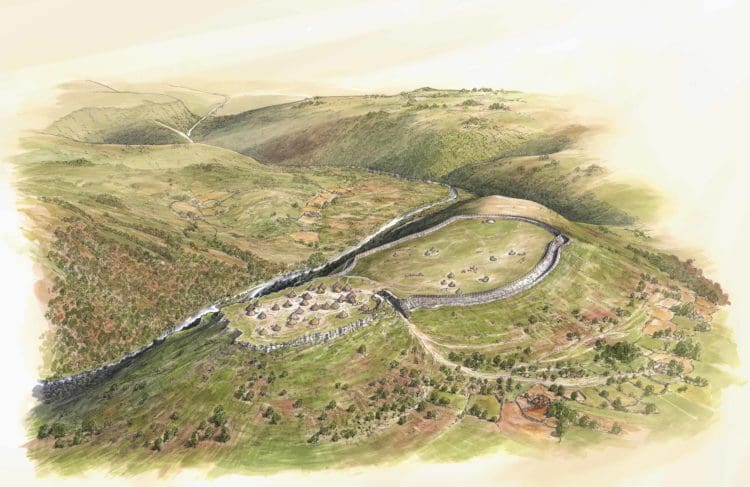When a wealthy Victorian ironmaster moved to the Little Doward in 1820 he came with grand ideas. As well as rebuilding his house, Wyastone Leys, Richard Blakemore set about creating a new picturesque landscape around it. Determined to leave his mark he demolished many of the little cottages which dotted the Doward and spoilt his view. Blasting through cliffs to form a picturesque chasm (you can still see the holes in the rock face where the dynamite was placed) you could be forgiven for thinking Blakemore was a bit of a vandal. His landscaped walks and carriage drives cut straight through the ramparts of the ancient Little Doward hillfort. As the local vicar reported, Blakemore was ‘entirely unacquainted with the antiquarian interest attached to his property’.
The crowning glory of Blakemore’s estate was ‘a curious observatory’, a 70 foot six-sided iron viewing tower he constructed, which visitors were allowed to climb on Sunday evenings. Compared to the Iron Age hillfort, which has survived for 2000 years, Blakemore’s Folly (as it became known) lasted for less than a century. The defensive banks and ditches of the hillfort were probably as much a statement of the prestige of the people who lived here, as Blakemore’s picturesque landscaping was. You can still follow Blakemore’s picturesque path through the landscape on the Head for the Hillforts Walk. The rusting gates along the way provide a reminder of this ironmaster’s attempt to ‘improve’ the landscape.
During the 20th century the hillfort was lost beneath a conifer plantation. As part of the £2.8 million Overlooking the Wye Landscape Partnership Scheme, supported by the Heritage Lottery Fund (HLF) and led by the AONB, this plantation was cleared to protect both the hillfort and the surrounding ancient woodland. Little Doward has woods of European significance, full of rare species, as well as valuable wood pasture for grazing livestock. Hardy cattle now help to manage the site. The remaining coppiced trees and charcoal platforms reveal the past importance of this woodland to local trade and industry.

